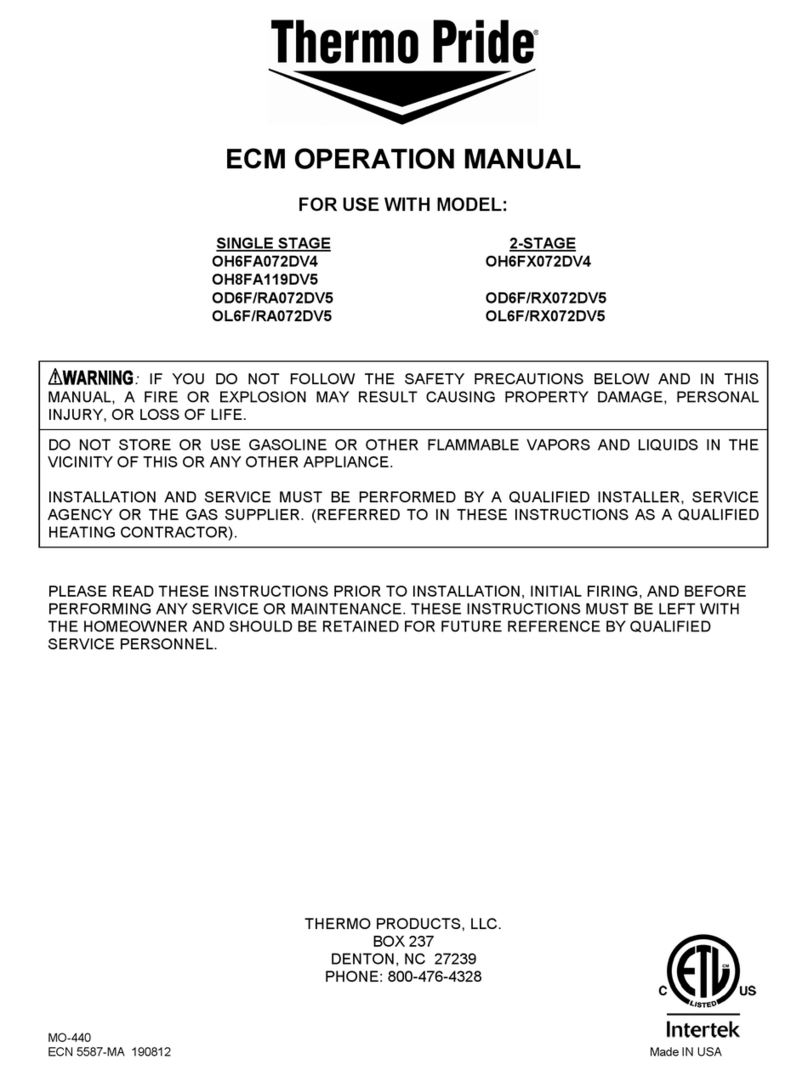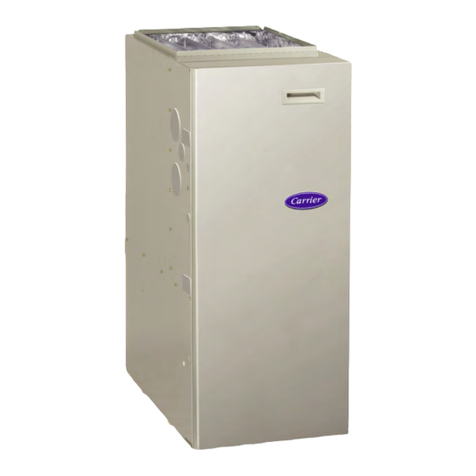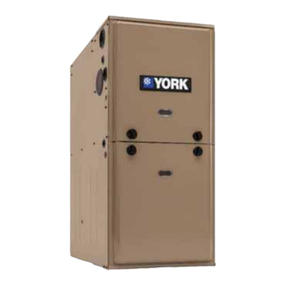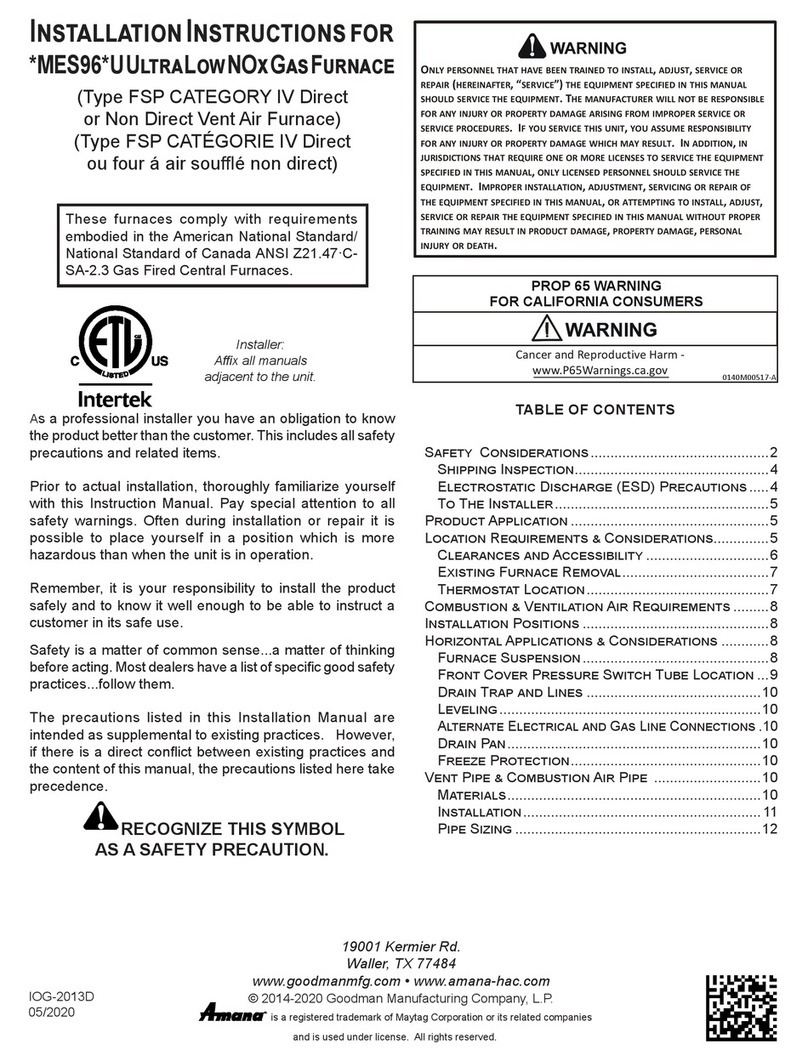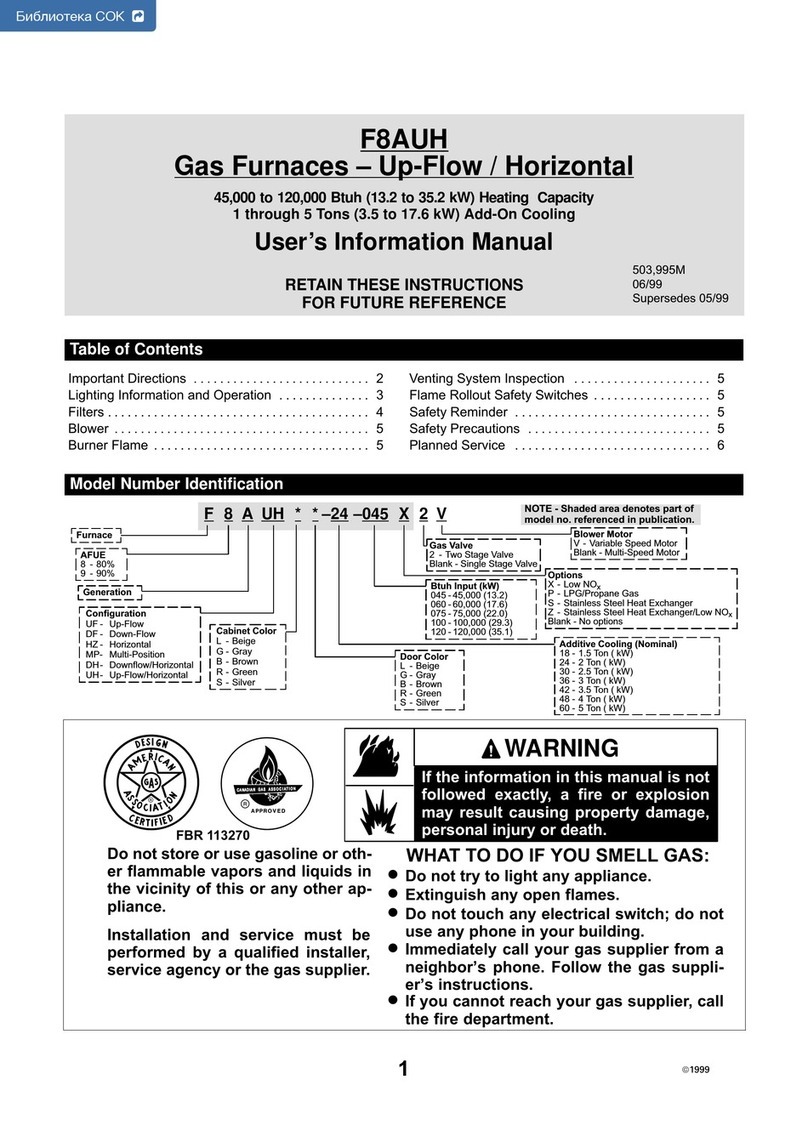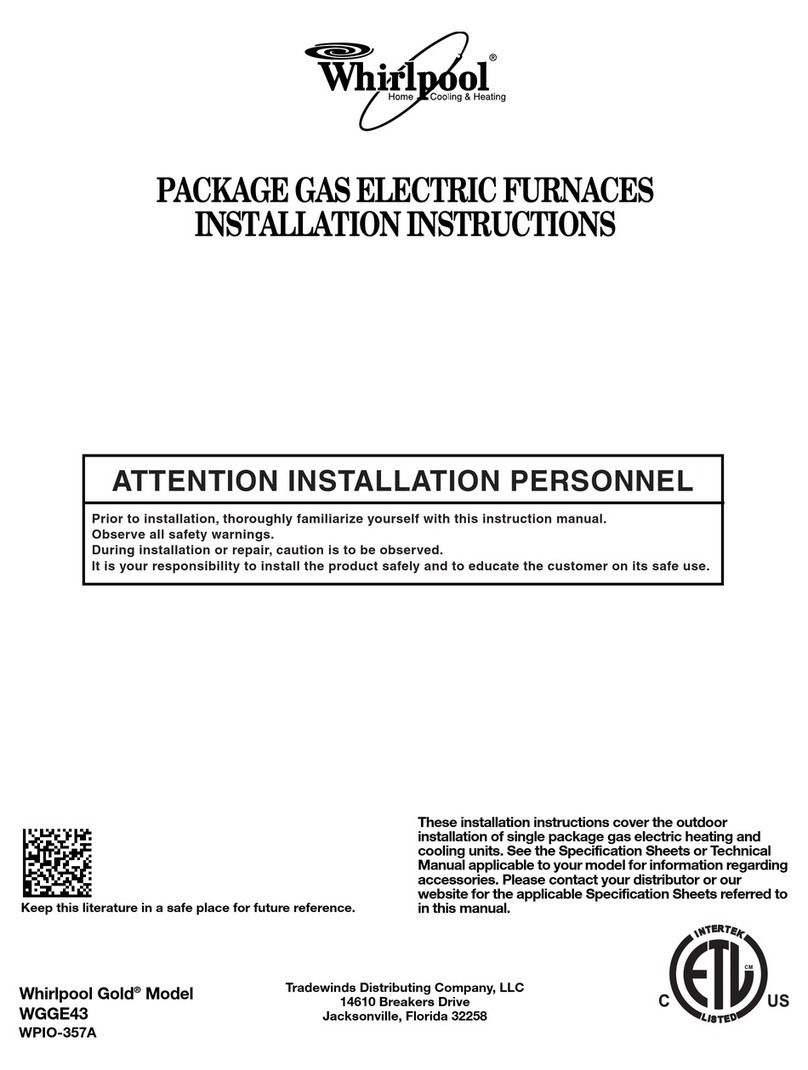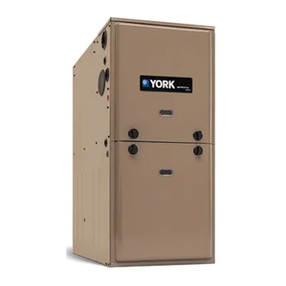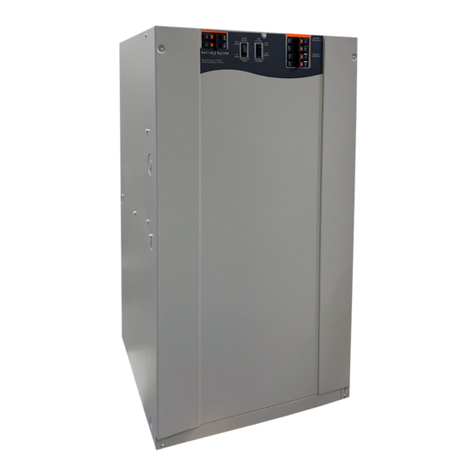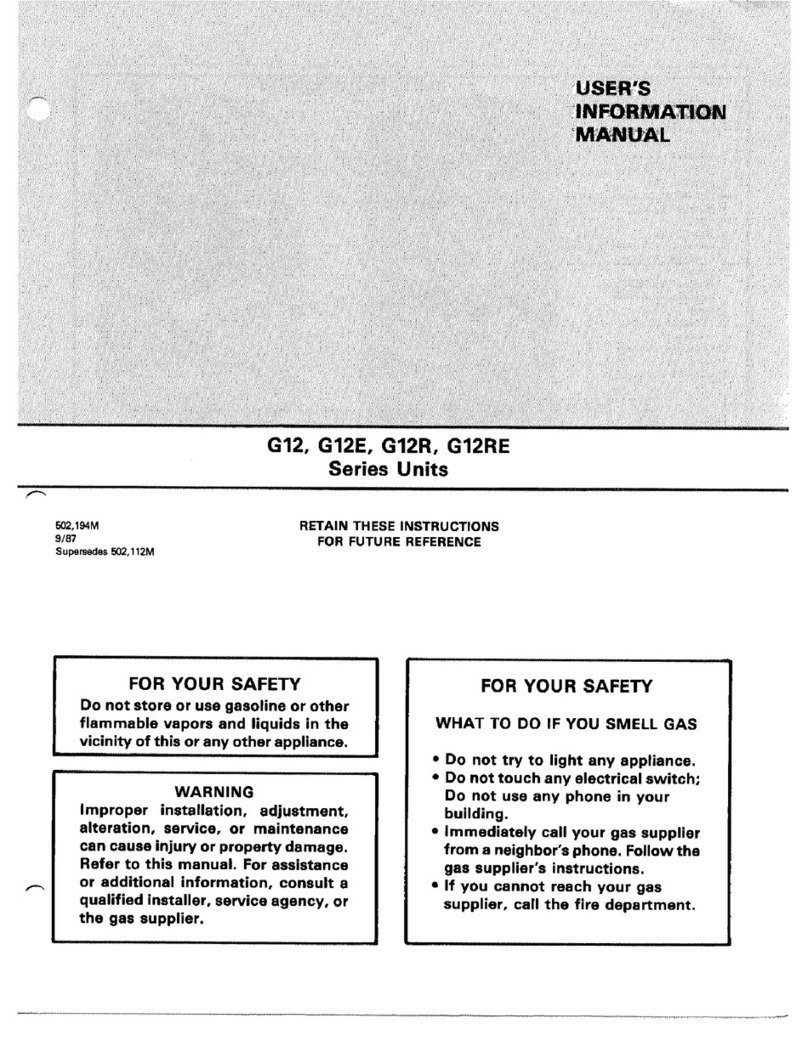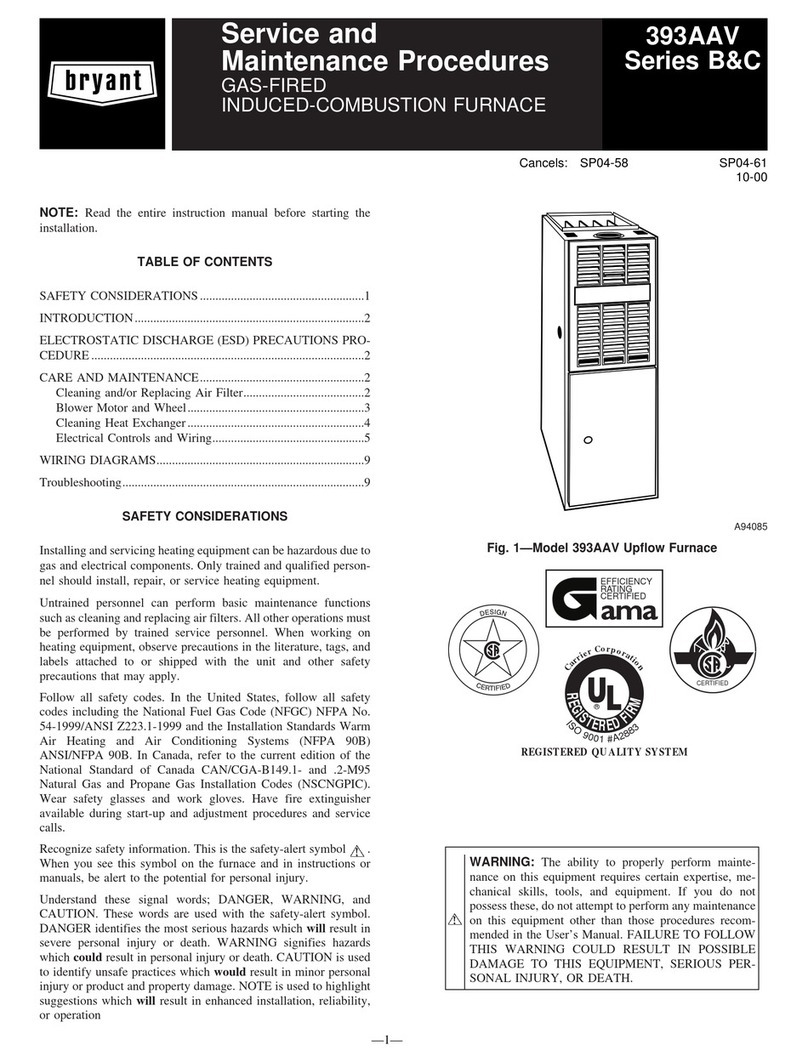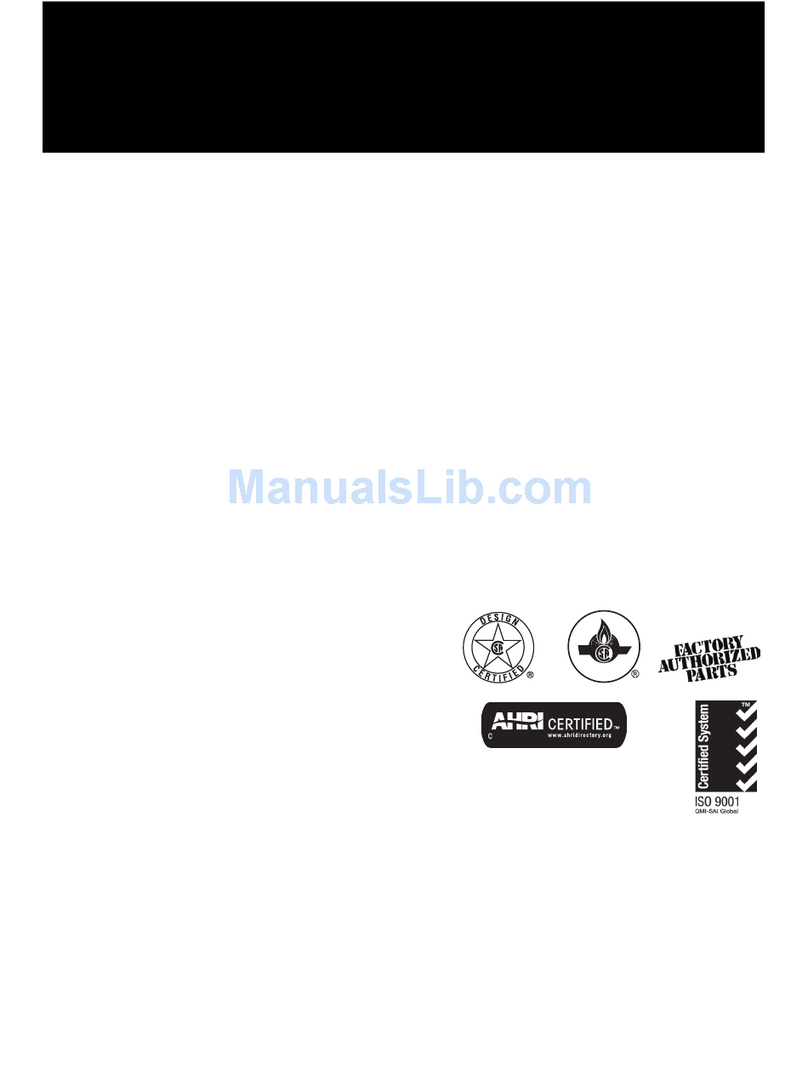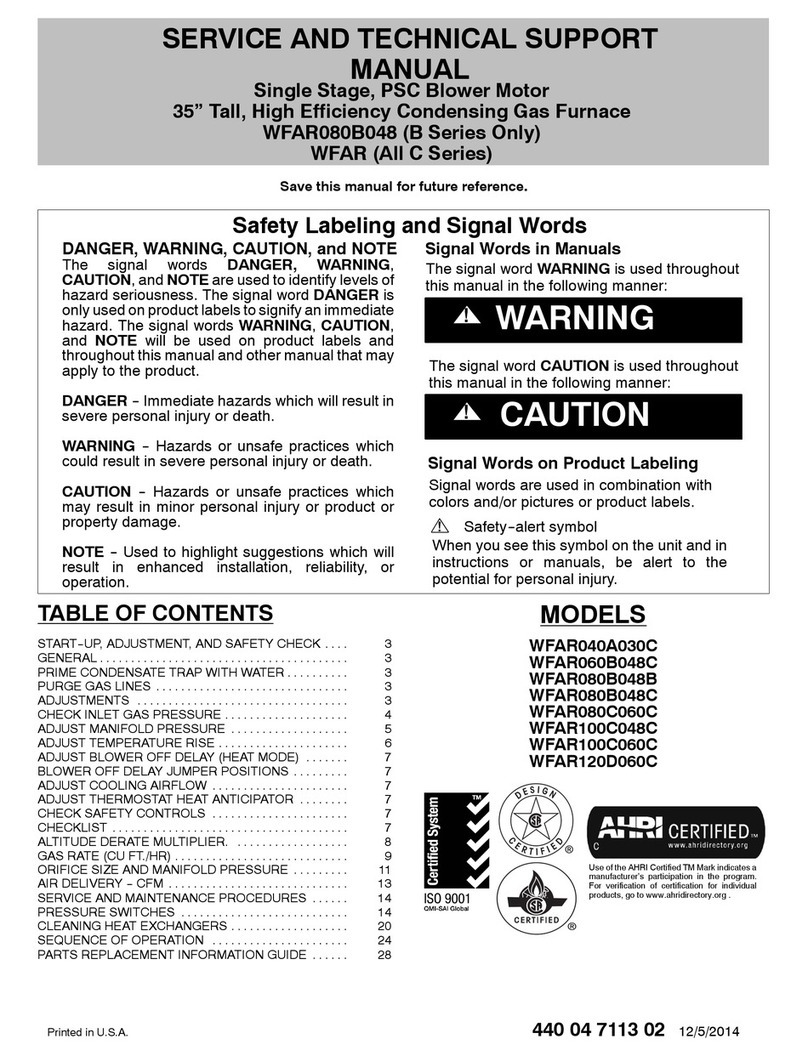
11 440 02 7000 02
Specifications subject to change without notice.
A CHECK−UP CHECKLIST
Your furnace represents an important investment in your family’s
comfort and your home’s value. To keep it performing properly
and to prevent future problems, have a trained service specialist
give your furnace a professional check−up annually. The following
checklist can be used as a guideline to proper service:
SInspect all flue gas passages, burners, heat exchangers, coupling
box(es), and inducer assembly.
SInspect all combustion−air and vent piping inside structure and
pipe terminations outside the structure.
SCheck gas pipes leading to and inside of your furnace for leaks.
SInspect and clean the blower motor and wheel.
NOTE: The inducer and blower motors are pre−lubricated and
require no additional lubrication. These motors can be identified by
the absence of oil ports on each end of the motor.
SInspect and change or clean air filter(s) if necessary.
SInspect all supply−and return−air ducts for obstructions, air
leaks, and insulation. Remedy any problem when necessary.
SInspect the return−air duct connection(s) at the furnace to ensure
it is physically sound, sealed to the furnace casing, and
terminates outside the space containing the furnace.
SInspect electrical wiring, connections, and components for loose
connections.
SPerform an operational checkout to determine whether your
furnace is working properly and if it requires adjustments.
SInspect all condensate drain tubes and condensate trap assembly
for leaks. The condensate removal system should be cleaned
annually by a qualified service agency. Refer to the Service and
Maintenance Instructions Guide for further information.
SExamine the physical support of the furnace. Support should be
sound with no cracks, sagging, gaps, etc. around the base.
SCheck furnace for any obvious signs of deterioration.
BEFORE YOU REQUEST A
“SERVICE CALL”
If your furnace is not operating or not performing properly,
you may save the expense of a service call by checking a few
things yourself before calling for service.
NOTE: Record the LED status code BEFORE removing the
blower access door or turning off 115−v power to the furnace.
Removing the blower access door or turning off the 115−v power
will end the LED status code display and erase the code from the
control’s memory.
SCheck for sufficient airflow. Check the air filter for dirt. Check
for blocked return−air or supply−air grilles. Be sure they are
open and unobstructed.
If furnace fails to operate:
SCheck thermostat for proper temperature. Is thermostat set above
room temperature?
SIs thermostat set to HEAT mode?
SIs the electrical power supply switch on? Is the blower access
door firmly in place? Are any fuses blown? (There is a fuse on
the furnace control.) Has a circuit breaker tripped?
NOTE: Turn off electrical supply before continuing with
checklist.
SIs the manual shut−off valve in the gas supply pipe leading to
the furnace open? Does the lever point in the same direction that
the pipe runs (open)? Or is it at a right angle to the pipe (closed)?
SCheck manual reset flame rollout switch located on the burner
box. (See Fig. 1.) If furnace has experienced high temperature
conditions, this switch will shut off the furnace. Reset it by
pushing the button on the switch. If it trips again, shut down the
furnace and call for service. See Shutting Down Your Furnace’s
section in this manual.
SCheck for obstructions around the vent termination.
UNIT OPERATION HAZARD
Failure to follow this caution may result in personal injury.
If for some reason the vent is blocked, the draft safeguard
switch will shut off the furnace. (See Page 2 for switch
location.) The switch will automatically reset after the furnace
cools off. If the furnace fails to operate, contact a qualified
service agency.
CAUTION
!
If your furnace still fails to operate, call your service representative.
For your convenience, record the furnace product and serial
numbers on back page. Should you ever require service, you will
have ready access to the information needed by your service
representative.
This furnace has a light emitting diode (LED) status code display
to aid the installer, service technician, or homeowner while
installing or servicing the unit. The LED code can be seen by
removing the main furnace door and viewing LED through the
view port in the blower access panel.
Regular dealer maintenance
In addition to the type of routine maintenance you might be willing
to do, your furnace should be inspected regularly by a properly
trained service technician. A semiannual inspection (or annual
inspection, at least) should include the following:
1. Inspection of all flue gas passages including the burners,
heat exchanger, inducer, elbow, and vent pipe.
2. Inspection of all combustion and ventilation air passages
and openings.
3. Close check of all gas pipes leading to and inside of your
furnace.
4. Inspection and cleaning of the blower motor and wheel.
5. Routine inspection and cleaning/replacement of the air filter.
6. Inspection of all supply−and return−air ducts for
obstructions, air leaks, and insulation. Any problems found
should be resolved at this time.
7. Inspection of furnace installation for proper support and any
obvious deterioration of the furnace. The support must be
sound and without sags, gaps, cracks, etc., around the
furnace base so as to provide an air seal between the
return−airduct and furnace.
8. A check for loose connections attaching individual
components. Inspection of all electrical wiring and their
connections.
9. Operational check of the furnace itself to determine working
condition. Repair or adjustment should be made at this time.
Ask your servicing dealer for further details about an economical
service contract that covers seasonal inspections.
















